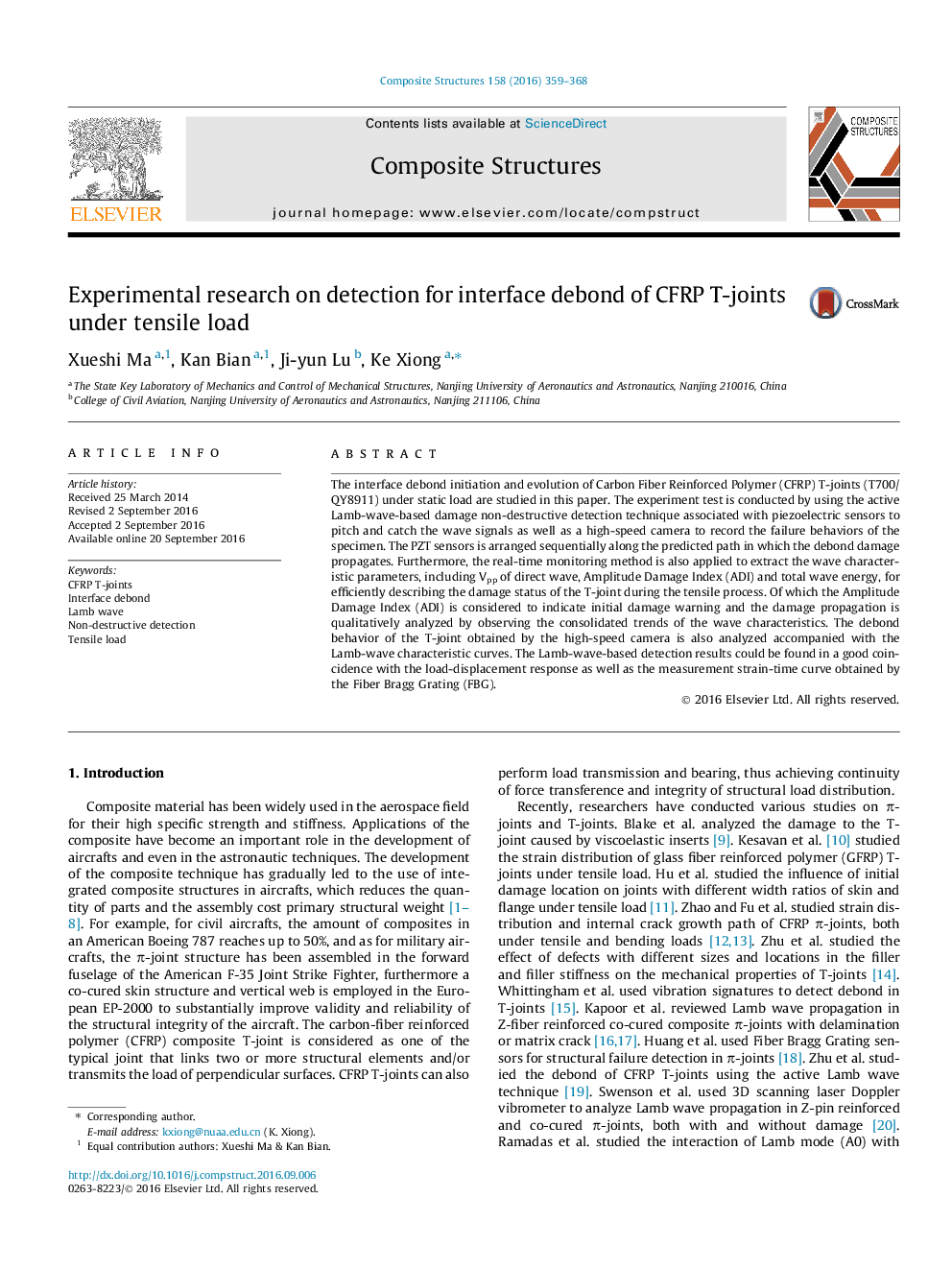| Article ID | Journal | Published Year | Pages | File Type |
|---|---|---|---|---|
| 4912355 | Composite Structures | 2016 | 10 Pages |
Abstract
The interface debond initiation and evolution of Carbon Fiber Reinforced Polymer (CFRP) T-joints (T700/QY8911) under static load are studied in this paper. The experiment test is conducted by using the active Lamb-wave-based damage non-destructive detection technique associated with piezoelectric sensors to pitch and catch the wave signals as well as a high-speed camera to record the failure behaviors of the specimen. The PZT sensors is arranged sequentially along the predicted path in which the debond damage propagates. Furthermore, the real-time monitoring method is also applied to extract the wave characteristic parameters, including Vpp of direct wave, Amplitude Damage Index (ADI) and total wave energy, for efficiently describing the damage status of the T-joint during the tensile process. Of which the Amplitude Damage Index (ADI) is considered to indicate initial damage warning and the damage propagation is qualitatively analyzed by observing the consolidated trends of the wave characteristics. The debond behavior of the T-joint obtained by the high-speed camera is also analyzed accompanied with the Lamb-wave characteristic curves. The Lamb-wave-based detection results could be found in a good coincidence with the load-displacement response as well as the measurement strain-time curve obtained by the Fiber Bragg Grating (FBG).
Related Topics
Physical Sciences and Engineering
Engineering
Civil and Structural Engineering
Authors
Xueshi Ma, Kan Bian, Ji-yun Lu, Ke Xiong,
